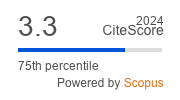Article | Open Access
Housing First in Denmark: An Analysis of the Coverage Rate among Homeless People and Types of Shelter Users
| Views: | 6973 | | | Downloads: | 6414 |
Abstract: A paradigm shift has taken place regarding the understanding of homelessness interventions in recent years as Housing First—early access to permanent housing in combination with intensive social support—has been shown to improve the chances of rehousing for homeless people. One of the largest Housing First programs in Europe was established with the Danish homelessness strategy from 2009 to 2013 and a follow-up program from 2014 to 2016. Results from the Danish program showed similar positive outcomes of Housing First as documented in other countries. However, evaluation research also uncovered barriers to scaling up and mainstreaming Housing First into the general welfare system. This article analyses the coverage rate of Housing First in the overall population of homeless people in Denmark. Results show that in the municipalities that were part of the program only one in twenty homeless people were enrolled in the program. Moreover, following Kuhn and Culhane’s (1998) typology of shelter users, the study examines the proportion amongst the transitional, episodic, and chronic shelter users that were enrolled in the Housing First program during the program period. Even in the primary target group for Housing First, the chronic shelter users, only 11% were included in the Housing First program.
Keywords: cluster analysis; Denmark; homelessness; Housing First; housing shortage; national homelessness strategy; shelter users
Published:
Issue:
Vol 6, No 3 (2018): Vulnerable and Disadvantaged Groups: On the Margins of the Welfare State?
© Lars Benjaminsen. This is an open access article distributed under the terms of the Creative Commons Attribution 4.0 license (http://creativecommons.org/licenses/by/4.0), which permits any use, distribution, and reproduction of the work without further permission provided the original author(s) and source are credited.


